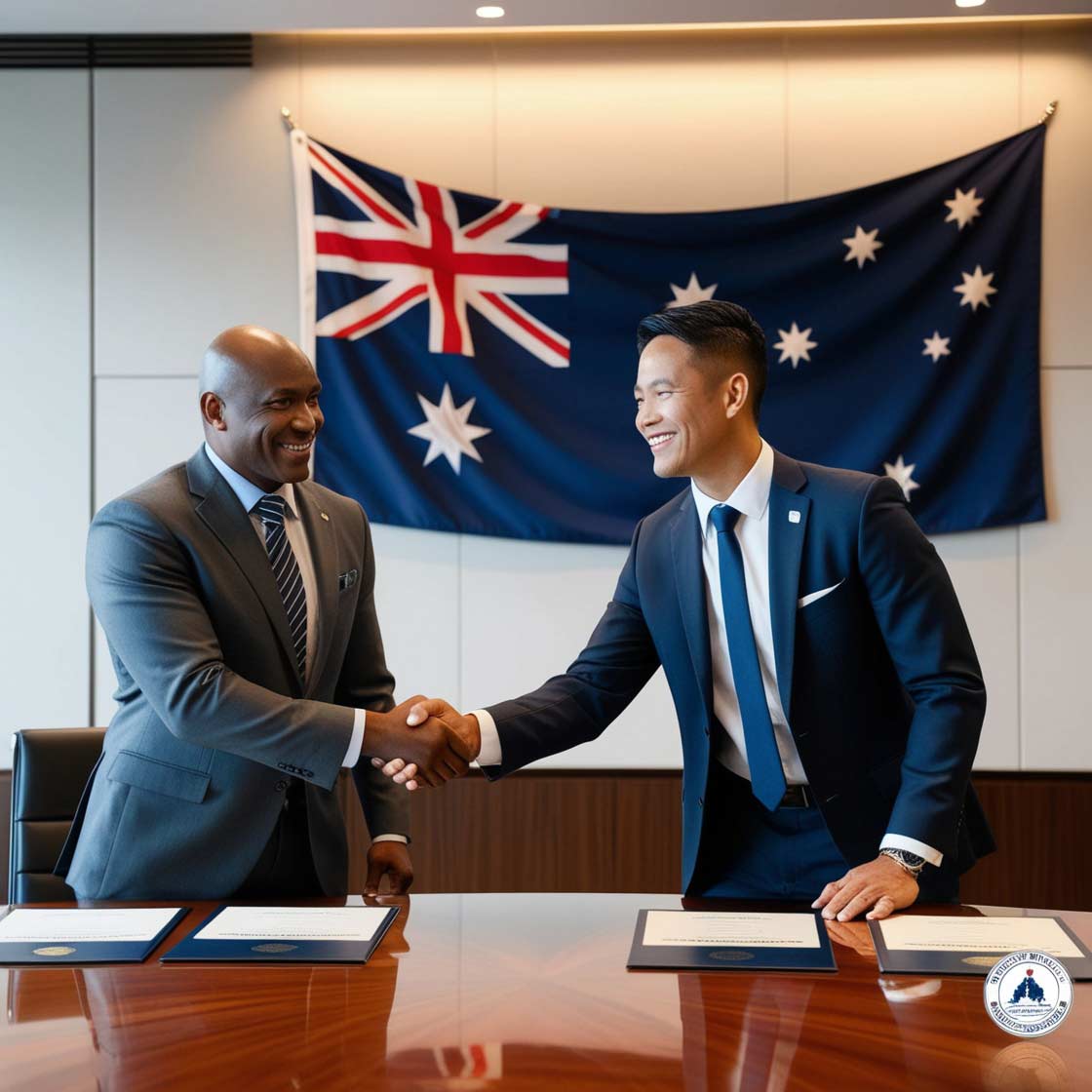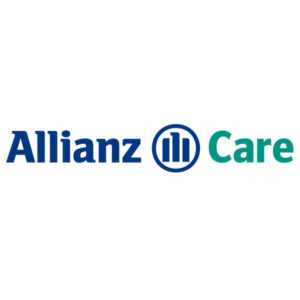Through the Subclass 186 Employer Nomination Scheme (ENS) visa skilled professionals can seek permanent residency in Australia when sponsored by eligible employers. Employees of certified organizations under the visa scheme can sponsor skilled professionals to immigrate to Australia. The 186 visa processing time requires understanding from both applicants and employers to build effective plans for their immigration process. Multiple components such as visa stream type application completeness level and governmental workload requirements determine the duration of processing.
186 Visa Processing Time
Multiple elements impact how long the 186 visa process takes including selected stream type and application fullness as well as Department of Home Affairs employee workload levels. Each visa stream follows unique processing timelines which we detail in the section below.
Processing Times by Stream
The Department of Home Affairs processes 186 visa applications based on various streams. Each stream has different eligibility requirements and processing times. Below are the estimated processing durations:
Temporary Residence Transition (TRT) Stream
The TRT stream is for applicants who have worked for their employer on a Temporary Skill Shortage (TSS) visa for at least two years. This allows employers to retain skilled workers permanently. The processing time in this stream are:
- 25%of applicants are processed within 2 months
- 50% processed in: 5 months
- 75% processed within 11 months
- 90% processed in: 18 months.
Direct Entry (DE) Stream
Skilled workers who lack previous Australian work experience or do not fulfill requirements for the TRT stream should apply through the DE stream. Becoming an applicant requires both a successful skills assessment and three years of experience in their occupation. The processing time in this stream are:
- 25%of applicants are processed within 2 months
- 50% processed in: 5 months
- 75% processed within 11 months
- 90% processed in: 18 months.
Agreement Stream
This stream applies to applicants sponsored through a labor agreement with the Australian government. It is designed for situations where standard skilled migration criteria do not apply. The processing time in this stream are:
- 25%of applicants are processed within 7 months
- 50% processed in: 10 months
- 75% processed within 11 months
- 90% processed in: 14 months.
Processing Time of 186 Visa After Medical
A medical assessment is a key requirement for the 186 visa. After submitting medicals, processing times vary. Standard processing time is usually 2 to 6 weeks. Delays may occur if further medical tests are required or there is a high demand for skill assessments. Applicants are advised to complete their medical examinations as soon as requested to avoid unnecessary delays in the visa decision process.
Typical 186 Visa Processing Timeline Comparisons by Stream
Every stage of visa application maintains its very own anticipated processing duration.
- Nomination – 1 to 2 months
- Medical – 2 to 6 weeks
- Approval pending – 3 to 8 weeks
Application final visa decisions take different amounts of time depending on the intricate nature of the submitted documents and government administrative periods.
| Stream | 50% Processed In | 90% Processed In |
| Direct Entry (DE) | 5 months | 18 months |
| Temporary Residence Transition (TRT) | 5 months | 18 months |
| Labour Agreement Stream | 75 days | 5 months |
Key Factors Influencing 186 Visa Processing Times
Several factors affect the timeline of a 186 visa application. Below are some key elements that impact processing speeds:
Medical Assessments
Medical examinations form a critical requirement for achieving 186 visa approval. The Department of Home Affairs requires all applicants to submit to medical assessments that check their compliance with Australian health standards. The medical examination requires general health checks with additional procedures of chest X-rays and blood tests.
Medical appointment booking delays combined with extra tests required for medical conditions and high medical center patient counts can lengthen the processing period. Applicants must prioritize scheduling their medical tests at the time they obtain their appointment instructions.
The applicant should maintain ready access to all required documents including medical history records to prevent immigration officials from needing further documentation.
Nomination Approval
Getting employer nomination approval serves as a necessary requirement before starting the visa process. Employers have to establish that their nominated position matches actual job requirements and industry expectations and follows all visa requirements.
The nomination process becomes delayed due to problems with employer financial stability together with insufficient documentation and unclear job descriptions.
Employers need to review all necessary documents before sending them to the authorities. The employer needs to answer promptly to Department of Home Affairs inquiries in order to accelerate the approval times. Job seekers must stay in touch with their employers to track the progress of the nomination approval safely through the visa system.
Application Completeness
Documentation and completeness of an application enhance the speed at which authorities process it. The processing duration gets longer when requests for additional information are made because of missing or incorrect supporting documentation.
Many applications get delayed because of wrong personal information, absent employment data, and inadequate proof of English language ability. Applicants need to carefully check all requirements and compare their applications against the official Department of Home Affairs checklist.
An absence of proper certification for supporting documents such as identification evidence and employment records together with academic qualifications can result in processing delays.
Stream Type
A 186 visa processing span depends on which stream applicants select between DE and TRT or Agreement. Processing time for Direct Entry (DE) enrollees is extended by skill assessment requirements together with the need for three years of work experience.
Potential TRT stream applicants need two years of work experience under their employer’s TSS visa to make an application for permanent residency. The Agreement Stream processing requires special labor agreements that might lead to distinct requirements which affect application processing durations.
Applicants need to comprehend every requirement of their chosen stream ahead of time to prevent delays when submitting their application. They must verify that they fulfil all criteria.
Industry and Occupation
The processing duration lengthens for specific industries and professions because of their high market demand while additional verification procedures are in place. The processing of immigration applications for people seeking entry through occupations on Australia’s Skilled Occupation List (SOL) moves more quickly when there is high labor demand for those positions.
The duration of processing time becomes longer when candidates need to obtain licensing as well as pass background checks in addition to meeting regulatory approval conditions specifically for healthcare and engineering fields.
To avoid application problems applicants must check processing rates within their field of work with a migration agent and study existing trends in their occupation. The process of reducing application delays becomes shorter when pre-approval licensing and regulatory documentation are ready.
Latest Updates on 186 Visa Processing Times (2025)
The Department of Home Affairs implements active efforts to decrease visa backlogs which will target permanent residency applications through 2024 and 2025. New policies seek to increase transparency as well as efficiency which should result in accelerated visa processing. The government has taken steps to simplify visa application processes alongside initiatives to reduce processing times.
Employment experience requirements under the Subclass 186 visa now accept sponsored work periods from any employer for meeting the two-year work experience criteria. The visa application process allows candidates to include time spent on promoted roles along with jobs within related job positions.
The CSOL functions as a single list which has replaced the former Medium and Long-Term Strategic Skills List. The CSOL demonstrates that it considers market analysis to focus directly on priority sectors.
The planned updates aim to make applications smoother while matching skilled migration to workforce requirements which means quicker approval processes will become possible during the forthcoming period.
Comprehensive Guide to Each Stage of the 186 Visa Process
The Employer Nomination Scheme (Subclass 186) operates as a permanent residency visa option which allows skilled workers to seek employment nomination from approved Australian organizations. The following guide provides detailed instructions about every important step in your application path.
Stage 1: Employer Nomination
An approved employer needs to create an extensive application package that includes all necessary documents.
- Proof of business registration and active trading status
- Detailed job description outlining:
- Position Responsibilities
- Required Qualifications
- Specific skill requirements
- Evidence of labor market needs, such as:
- Workforce planning documents
- Recruitment attempts
- Employers need to provide valid reasons when they decide to get foreign workers.
- Financial statements demonstrating business stability
- Proof of compliance with Australian workplace laws
- Evidence of ongoing business operations
Common Challenges
Businesses commonly meet these problems in the recruitment process:
- Incomplete or outdated financial documentation
- Vaguely defined job roles
- Organizations lack sufficient evidence that prove the real need for their designated position nomination.
- A company fails to prove its ability to support the future nominee
The review of documentation should always be done by an authorized migration agent. The nomination validation requires updated financial records with exact contents presented through complete evidence to demonstrate genuine eligibility for the nomination.
Stage 2: Visa Application Submission
Prospective visa holders must compile:
- Valid passport
- Birth certificate
- Comprehensive skills assessment from a relevant assessing authority
- Candidates must present the results from English language proficiency examinations which include IELTS together with PTE and TOEFL.
- Academic and professional qualification certificates
- Detailed employment history with reference letters
- The candidate needs to demonstrate their work history which directly matches the chosen occupational position.
- Federal Police clearance certificate
- Health insurance documentation
- Chest X-ray and medical examination results
Common Pitfalls
Most candidates make three main mistakes when applying for permanent residence visas.
- Mismatched information across different documents
- Outdated or incorrectly certified translations
- Incomplete skills assessment documentation
Tip: Create a comprehensive checklist. Professional review services should examine all documents to verify their accuracy and consistency alongside Department of Home Affairs requirements.
Post-Medical Assessments
Mandatory health evaluations occur through physicians approved by the Department of Home Affairs. Comprehensive medical screening includes:
- General physical examination
- Chest X-ray
- Blood tests
- Comprehensive health history review
Standard processing time usually takes 2–4 weeks. The assessment results go straight to the Department of Home Affairs.
Tip: Schedule medical examinations early. Medical facilities should receive ongoing updates about your requests and you need to handle new medical file requests without delay.
Final Visa Decision
Before the final decision, the Department of Home Affairs reviews:
- Employer nomination documentation
- Applicant’s qualifications
- Health and character assessments
They might also include potential additional information requests. Different personal conditions cause variations in processing durations for application submissions.
Individuals can track application progress through ImmiAccount in real time. The applicant needs to provide immediate responses to all additional information requests sent by the Department of Home Affairs. All submitted documents should receive proper organizational storage within a designated system
Tip: Regularly check ImmiAccount. Set up receiving email alerts and respond immediately to supplementary requests because this enables smooth processing without delays.
Common Delays and Solutions
The process of getting an 186 Visa typically presents more difficulties than basic challenges. Although the professional opportunities under this program are exciting they present multiple challenges which affect both application approvals and processing duration.
Nomination-Related Delays
Organizations which successfully fulfill the intricate rules required to nominate within 186 Visa applications determine whether their applicants succeed or fail with their application. National and employer-related documentation standards become vital when processing nomination applications because these assessments must demonstrate full comprehension of both employer business needs and government immigration regulation requirements.
Typical Issues:
- Insufficient documentation of genuine business need
- Complex employer sponsorship requirements
- Detailed position specification challenges
Strategic Solutions:
- Comprehensive pre-assessment of nomination documentation
- Professional migration agent review
- Detailed job description development
- Alignment with current Department of Home Affairs standards
Medical and Character Checks
The medical and character assessment testing serves as a vital stage that visa processing evaluates at this point. The assessment procedure extends past documentation review to include complete verification of the personal and health history information of applicants.
Common Processing Bottlenecks:
- Extended police clearance certificate processing
- Complex medical examination requirements
- Lengthy health screening procedures
Proactive Approach:
- Early initiation of police and medical checks
- Use of authorized medical practitioners
- Maintaining comprehensive documentation
- Proactive follow-up on pending documents
Further Information Requests (RFIs)
The communication challenge emerges from Further Information Requests (RFIs) because they require clear and timely responses.
Response to Department of Home Affairs requests for additional information influences the entire process of the application. Precision and clarity become paramount.
Potential Communication Obstacles:
- Incomplete information submissions
- Misinterpreting document requirements
- Formatting and response timing issues
Effective Response Strategies:
- Professional migration expert consultation
- Clear, concise communication
- Comprehensive supporting evidence
- Timely and precise responses
- Professional translation services if needed
Applicants who implement proactive solutions to potential challenges will boost their likelihood of obtaining a problem-free visa processing experience. Success in the process depends on three main elements: preparation, precision and persistence.
How to Speed Up 186 Visa Application?
Strategic planning is essential to achieve efficient and detailed processing of the 186 Visa application. Success hinges on understanding key accelerators and potential bottlenecks in the immigration process.
Proactive Measures
A well-timed visa application needs detailed planning which builds from future perspectives. Through this method, applicants reduce the chance of delays and showcase their dedication to the application process.
Employers: The nomination documentation needs to include complete details before the application deadline. The employer should provide comprehensive business context, clearly articulate position requirements, and maintain up-to-date corporate records.
Applicants: Every applicant should complete their skills assessment early. They should also gather all required documentation, ensure English proficiency test completion, and verify document accuracy and consistency. All critical documents need to have an electronic backup created.
Responding to RFIs
The processing time for applications becomes longer when information requests are made. A systematic prepared examination with exactness minimizes expected delays in the process.
Request for Information (RFI) Management:
- Respond immediately to departmental queries
- Provide clear, comprehensive information
- Include all supporting documentation
- Use professional translation if necessary
- Anticipate potential follow-up questions
Consult Professionals
Understanding migration experts helps streamline the application process. Migration Agent also helps and provides the following benefits:
- Conduct pre-application document review
- Identify potential application vulnerabilities
- Develop strategic response frameworks
- Navigate complex immigration requirements
- Provide current processing guidance
Contact Grace International for Expert Guidance
The visa application process for the 186 visa gets expert support from Grace International throughout all its requirements. Our team of professionals maintains proper documentation while ensuring timely submission of visa applications as well as offering expert advice to accelerate the visa process.
Contact us for more details regarding your Visa 186, and get the best possible results you desire.








